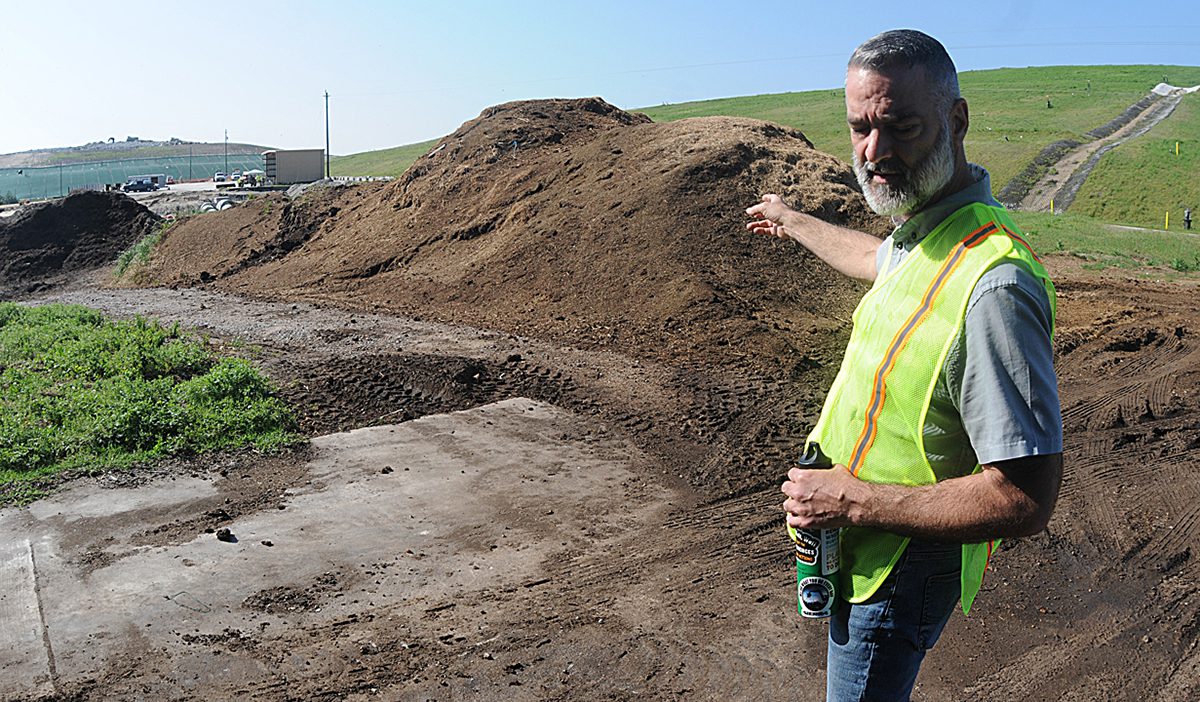
WILMINGTON – It is not about turning a profit.
Showing people that food, yard and animal waste has value – that’s centric to New Hanover County’s composting program.
Supporter Spotlight
“It was never intended to be a revenue stream for us,” said New Hanover County Recycling and Solid Waste Director Joe Suleyman. “To keep that out of the landfill, that’s where we make our money. It’s about educating the customers. We want to make believers out of them.”
More than five years have passed since the county began operating its composting program, one built on a “kind of” shoestring budget, ingenuity and creating the just-right recipe of chemical balance, time and temperature.
Last fiscal year, the program made available to the public 273 tons of finished compost — nutrient-rich material for New Hanover County residents — for free.
Over the years, development in the county and billion-dollar damaging hurricanes have shaved off years from the landfill’s life expectancy.
When Suleyman took the helm of the county’s recycling and solid waste program in 2012, the landfill was taking in about 600 tons of waste a day.
Supporter Spotlight
Today, an average of about 700 trucks routinely unload about 2,000 tons of waste a day, he said.
Mixed in with the household trash, construction debris and other waste is tons and tons of discarded food.
Up to 40% of produced food goes uneaten in the United States, according to the U.S. Department of Agriculture. An overwhelming majority – about 95% – of that food waste gets disposed of in landfills.
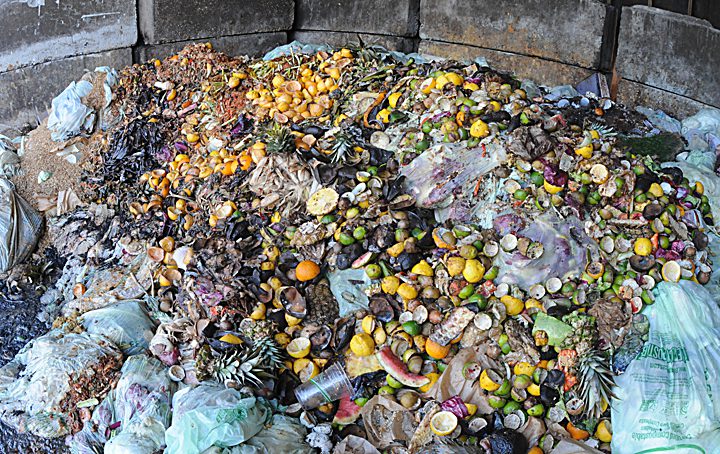
Those gut-punch statistics prompted the USDA and U.S. Environmental Protection Agency in June 2013 to launch the U.S. Food Waste Challenge.
The challenge calls on operators within the food chain, from farmers and food manufacturers to grocery stores, universities and local governments, to connect with hunger relief organizations to recover food waste, or food that is edible but discarded; reduce food waste through improving storage, shopping, marketing, labeling and cooking methods; and recycle food waste to feed animals or create compost, bioenergy and natural fertilizers.
The USDA and EPA in 2015 established a national goal to reduce by 50% food loss and waste by 2030 to improve food security and conserve natural resources.
The following year, officials with the University of North Carolina Wilmington’s dining services approached the county about partnering to divert pre-consumer food waste from the university’s Wagoner Dining Hall.
The idea took flight, but not without its challenges, Suleyman said on a recent April morning while standing amidst the composting area tucked among towering green grass-covered hills created by tons upon tons of trash at the county’s landfill off U.S. 421 North in Wilmington.
The footprint for a composting operation within the landfill required something very compact.
Enter Daritech Inc., a Lynden, Washington-based company that designs and manufactures components for cattle milking and manure management.
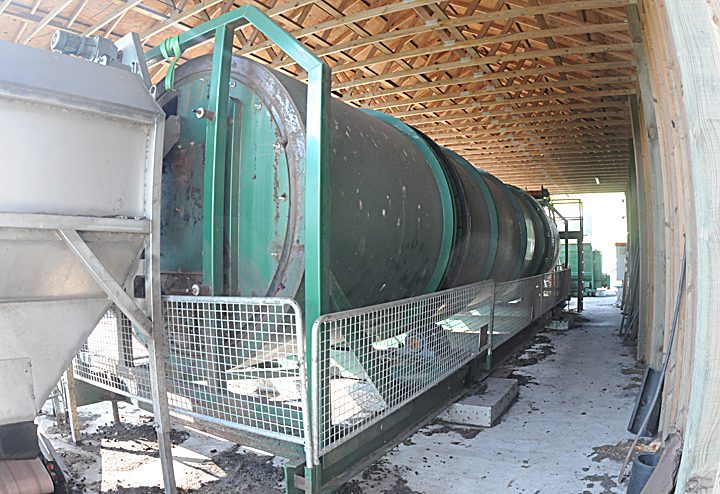
The county purchased a BeddingMaster in-vessel manure composter, an 8-foot-diameter, 40-foot-long machine designed to recycle manure into bedding for cows.
It took about two months of trial and error to figure out they could feed a chemistry-derived recipe of food, yard and animal waste into the machine that would turn out a product safe for people to use as compost.
The in-vessel composter and its supporting equipment were installed at New Hanover County’s landfill in November 2017 and operations began the day before Thanksgiving of that year.
As the large, green, barrel-like cylinder slowly and squeakily turned, Suleyman explained the composting process, one he said is about balancing nitrogen and carbon.
Each morning, Sarah Morton, environmental technician, uses a small Bobcat loader to feed about 10 cubic yards of the right combination of food and yard waste and discarded animal bedding into the composter.
From there, the fully automated in-vessel system handles the remainder of the work. The machine is completely insulated so the temperature inside is consistently regulated. This allows billions of good bacteria to naturally generate heat, which is needed to kill off bad bacteria like salmonella and weed seeds.
“The magic goal is 130 degrees Fahrenheit for three consecutive days,” Suleyman said.
Excess moisture collected from fresh air fans pulled into the machine drips into a bucket. Liquid in the bucket goes into the recipe to supercharge the biological activity taking place inside the machine.
“We’re doing what Mother Nature does every day, but we speed up the process,” Suleyman said.

Once the mixture is turned into usable compost it is released from the machine and pushed by the Bobcat into a curing bunker where it must stay for a month.
The finished product is a black-colored, crumbly material.
It did wonders for Debby Riescher’s flower beds.
“It made a difference to my flowers,” she said. “They’re perky and bright and they’re coming up.”
Earlier this month, Riescher was back for a second round of compost with plans to tackle her lawn.
The compost “is a game changer because my soil is sand,” the Wilmington resident said.
Riescher and Morton filled with compost upwards of 20 large, black plastic yard waste-type bags. Each bag is filled to about a third of the way to make their weight manageable for Riescher to carry. Surprisingly, the smell emitted from the area is not putrid, but rather earthy.
She doesn’t have a pickup truck so she used the bags to transport the compost from the landfill in her small KIA SUV, its rear becoming noticeably closer to the ground as more bags were tossed inside.
Riescher said she learned about the county’s composting program during a 2019 master gardener class hosted at the New Hanover County Arboretum. Suleyman was one of the speakers during the class.
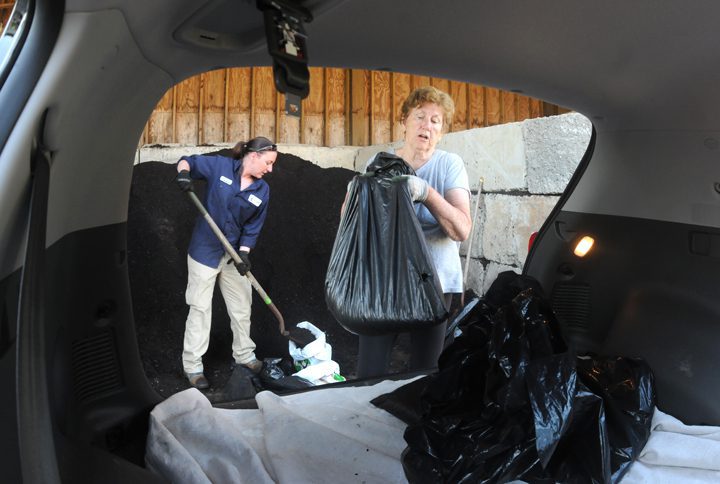
“It’s free,” Riescher said. “That’s the thing. I just know I couldn’t afford to buy enough compost to spread over my lawn.”
Spring is the busy season for the composting area, where people come to get compost in everything from truck beds to storage totes to bags.
A handful of people are on a waiting list for compost, Morton said.
Initial cost of the composting operation, including construction of buildings on the site, the composter and permitting was $680,000.
The electric bill for the operation – less than $200 a month.
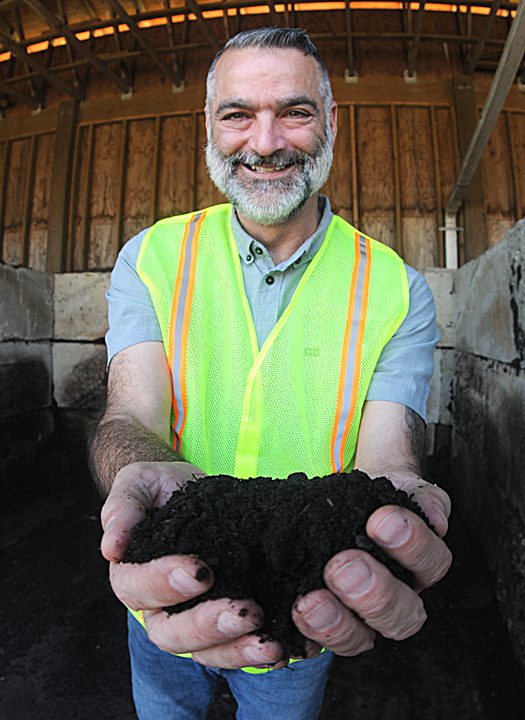
“It’s such a simple design,” Suleyman said.
Since the program’s inception, other entities from local restaurants, Live Oak Bank, Tidal Creek Co-op and homeowners have diverted food waste to the county’s composting operation.
Suleyman said the program has taken about 250 tons of compostable waste annually for the past five and a half years. That figure is on the conservative side, he said.
At least 2,500 tons of compost has been generated since the program’s inception.
The county operates a HazWagon, which parks in different parts of the county each week to accept waste that can be used at the composting facility.
More information about the HazWagon, compostable materials and scheduling times to pick up compost is available at https://nhcgov.com/354/Composting.







